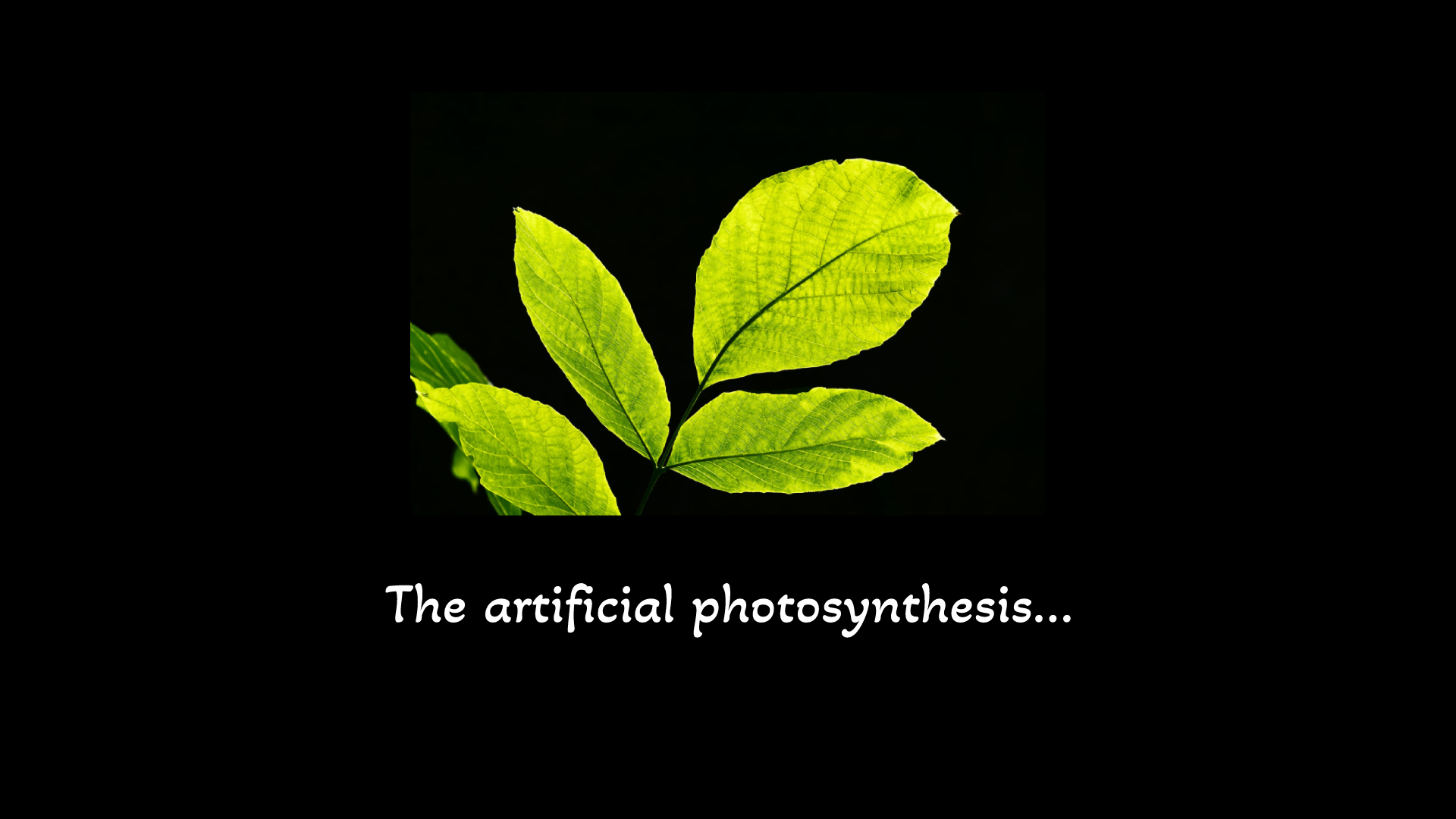Photoelectrocatalysis

When it comes to the conversion of solar to chemical energy the only process that comes to our mind is photosynthesis. Photosynthesis is the process by which plants convert sunlight to various chemicals in the presence of a pigment called chlorophyll. Similarly, we can convert solar energy directly to chemical energy i.e., hydrogen with the help of a semiconductor element called photocatalyst through a process called photoelectrocatalysis.
Photoelectrocatalysis is similar to normal electrolysis where a photocatalyst is used as one of the electrodes namely a photoanode or photocathode and a counter electrode made of metal mostly platinum. A photocatalyst is a semiconductor material which means it produces electrons and holes upon excitation by the sun’s radiation. The electrons move to the conduction band and holes remain on the valance band of the semiconductor surface. These electrons and holes undergo a series of redox reactions with water to produce hydrogen and oxygen. The holes in the valance band oxidize water to produce oxygen gas and hydrogen ions (H+). These protons then pass through a membrane and react with the electrons of the conduction band forming hydrogen which is then separated.

State of the art
A joint team of researchers from Repsol has been working on industrialising photoelectrocatalysis since 2012 at the Repsol Technology lab in Spain. Later in 2018 Enagas joined the project in an agreement making both companies co-owners of the project. In the year 2024, a demo plant capable of producing 100 kg of hydrogen will become operational in Puertollano, Spain. Later in the year 2028, an industrial-scale hydrogen production plant capable of producing 10t hydrogen per day will also be built in Puertollano.

Conclusion
As of today a most reliable method to produce green hydrogen using the Sun is by plugging a PEM electrolyser into an electric grid of a solar power plant. Photoelectrocatalysis offers a better solution to this approach by solving the problems involved in the transformation and transport of electricity thereby improving the system efficiency. This technology can also be further developed for domestic hydrogen production in the future. For example, Nano-photocatalyst can be used in a cargo ship spending months in the ocean to directly produce hydrogen on board from sea water only with the help of sunlight.
References:
- Ross, Julian R. H. “Environmental Catalysis.” Contemporary Catalysis, 2019, pp. 291–314. Crossref, https://doi.org/10.1016/b978-0-444-63474-0.00013-8.
- Santos, Mónica S. F., et al. “Chemical and Photochemical Degradation of Polybrominated Diphenyl Ethers in Liquid Systems – A Review.” Water Research, vol. 88, 2016, pp. 39–59. Crossref, https://doi.org/10.1016/j.watres.2015.09.044.
- Liu, Yan, and Xiaobo Chen. “Black Titanium Dioxide for Photocatalysis.” Semiconductors and Semimetals, 2017, pp. 393–428. Crossref, https://doi.org/10.1016/bs.semsem.2017.04.001.
- Kudo, Akihiko. “Development of Powdered Photocatalfsts for Water Splitting.” Science and Technology in Catalysis 2006, 2007, pp. 115–18. Crossref, https://doi.org/10.1016/b978-0-444-53202-2.50018-x.
- Li, Rengui, and Can Li. “Photocatalytic Water Splitting on Semiconductor-Based Photocatalysts.” Advances in Catalysis, 2017, pp. 1–57. Crossref, https://doi.org/10.1016/bs.acat.2017.09.001.
- ---. “Environmental Catalysis.” Contemporary Catalysis, 2019, pp. 291–314. Crossref, https://doi.org/10.1016/b978-0-444-63474-0.00013-8.
- Rayaroth, Manoj P., et al. “Degradation Studies of Halogenated Flame Retardants.” Emerging Halogenated Flame Retardants in the Environment, 2020, pp. 303–39. Crossref, https://doi.org/10.1016/bs.coac.2019.11.003.
- Spazzafumo, Giuseppe. Power to Fuel: How to Speed Up a Hydrogen Economy. 1st ed., Academic Press, 2021. https://doi.org/10.1016/B978-0-12-822813-5.00003-5.
- Letcher, Trevor. Storing Energy: With Special Reference to Renewable Energy Sources. 2nd ed., Elsevier, 2022. https://doi.org/10.1016/B978-0-12-824510-1.00015-5
- Christoforidis, Konstantinos C., and Paolo Fornasiero. “Photocatalytic Hydrogen Production: A Rift into the Future Energy Supply.” ChemCatChem, vol. 9, no. 9, 2017, pp. 1523–44. Crossref, https://doi.org/10.1002/cctc.201601659.
- ---. Electrochemical Water Electrolysis: Fundamentals and Technologies (Electrochemical Energy Storage and Conversion). 1st ed., CRC Press, 2020. https://doi.org/10.1201/9780429447884
- “Very disruptive” direct solar-to-hydrogen commercially viable by 2030, says oil group Repsol. (2021, August 24). Recharge | Latest Renewable Energy News. https://www.rechargenews.com/energy-transition/very-disruptive-direct-solar-to-hydrogen-commercially-viable-by-2030-says-oil-group-repsol/2-1-1056771